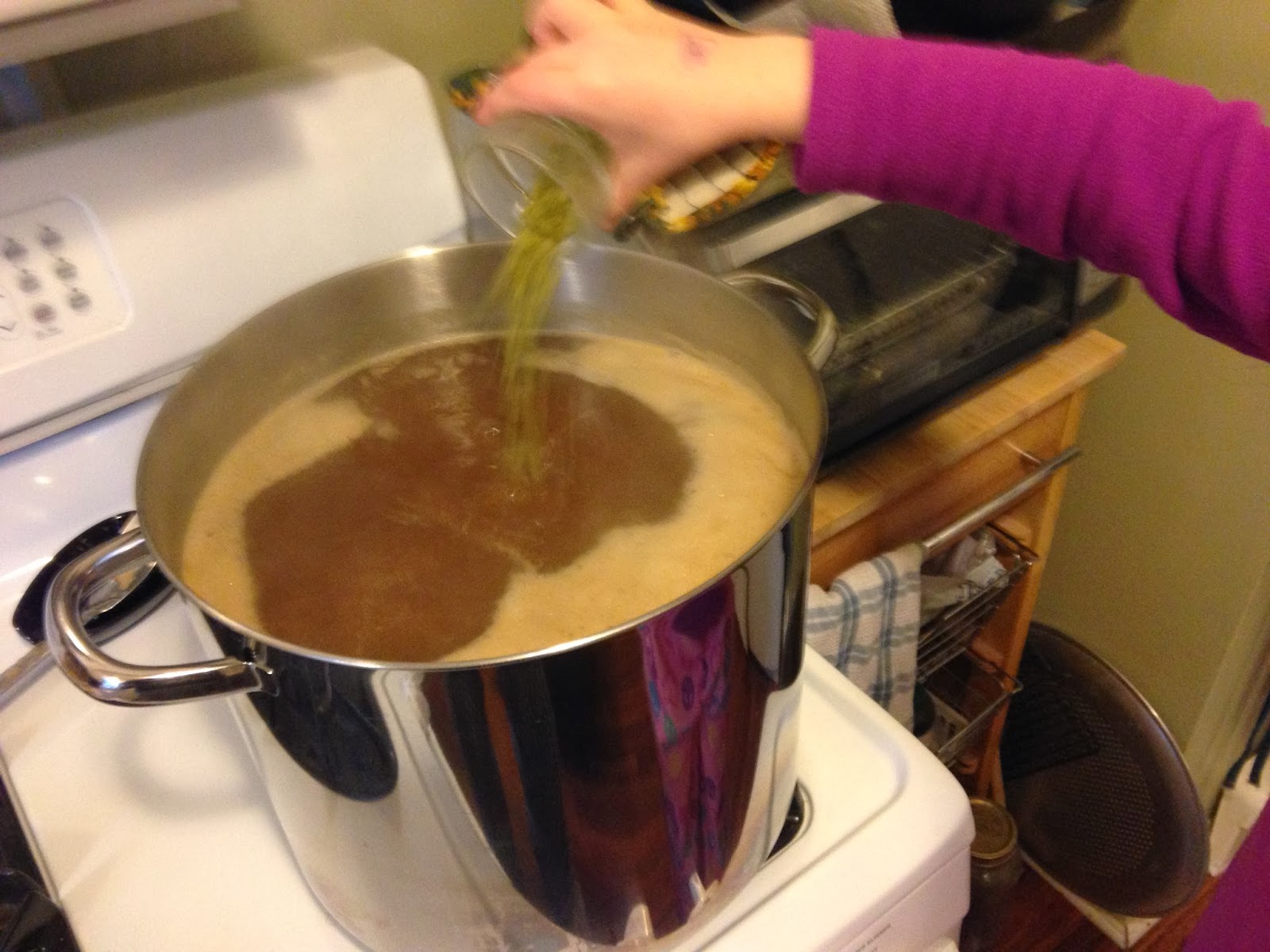There are two methods of packaging: bottling and kegging. Bottles are much more portable and easier to share with others, but you're limited to 12-ounce servings and the bottling process takes longer (takes me 3 hours from setup to cleanup). Kegs are more convenient in the home, you can pour whatever small or large glass you want, you usually need to transfer to another vessel (like a bottle or growler) when sharing with others, and the kegging process takes under and hour.
Because kegging equipment is much more expensive ($200-300 plus refrigeration unit), most beginning home brewers start out with bottling ($50-75 for everything).
Me, I've bottled 989 bottles these 2 1/2 years. This, roughly, is how I do it.
First, the entire area needs to be prepped. All surfaces get a wipe down or sweep. I use the entire kitchen table and the floor immediately in front of it.
All equipment gets brought out and assembled. Everything that will come in contact with the beer gets a few minutes of contact time with the no-rinse sanitizer - buckets, hoses, tubes, clips, bottles, caps. It sounds a lot more complicated than it really is.
Next: siphoning the beer from the fermentor to the bottling bucket. A measured amount of sugar gets boiled with a bit of water then cooled and added to the bottling bucket, and the beer gets "racked" on top of it. The sugar gives the yeast enough food to consume so it can produce a bit more CO2 in the bottle, which gives the finished beer its carbonation.
The bottling bucket is moved onto the table, and the hose and bottling wand are attached to the bucket. The bottling wand has a spring loaded tip that opens a valve when depressed on the bottom of the bottle. When the bottle is filled, I lift the wand, stopping the flow of beer and leaving the perfect amount of head space in the bottle.
The question I get asked most frequently about bottling: How do you get the cap on? A special capper presses the crown onto the bottle and crimps it in place.
In the earlier step when I transferred the beer to the bottling bucket, I grabbed about 6 ounces of beer in a Pyrex cup. I put this sample in a hydrometer jar so I can measure the specific gravity, which tells me the concentration of sugars in solution. It's tough to see in this picture, but it's reading 1.018. My hydrometer reads 2 points high, so the corrected reading is 1.016.
When I subtract this from my original gravity of 1.051 and multiply by 1,000, that's 35 gravity points consumed by the yeast. Multiply 35 by about 0.13125, and we have 4.6% alcohol by volume.
The 6-ounce sample then gets used as a taste test. It now tastes very close to what the final product will be, but it's flat and warm. This batch tastes very chocolaty with a mild bitterness. This brown ale tastes like it's approaching a porter.
The finished bottles go into a case, then into a space that's between 65 and 75F (usually a closet). After three weeks, a few bottles get put into the fridge for a week before tasting day.
My haul on a 3-gallon batch is between 28 and 30 bottles, or about five 6 packs. It's a lot of work for just over a case of beer, but because I brew every 2-3 weeks, I usually have respectable variety in my beer fridge.
How to celebrate my 3 hours of labor? A little Sharknado and a glass of Saison Dupont. I'm classy like that.




















